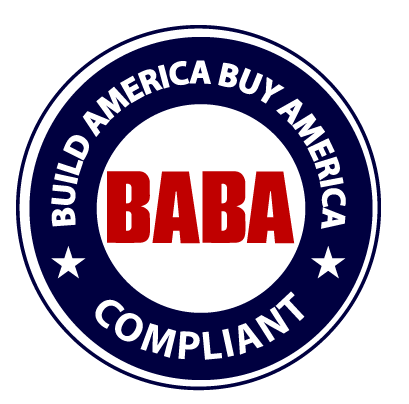Contact Us Today
IFAS Wastewater Treatment Systems
Adding an integrated fixed film activated sludge system (or IFAS) can enhance the capacity and efficiency of an activated sludge system by taking advantage of existing wastewater treatment technology and boosting it with biological treatment methods.
SSI Aeration, Inc.’s IFAS wastewater treatment systems provide various benefits to plants using activated sludge treatment systems, from increased capacity to improved nitrification. In addition, these systems offer an easy way to upgrade processes.
Process Design
IFAS systems use biofilm growth to help remove organic materials from waste streams. During an IFAS process, biofilm carriers are mixed in an activated sludge basin or a combination of activated sludge and water.
The process allows for two different biological populations to work together with mixed liquor suspended solids (MLSS) breaking down most of the organic matter and a nitrifying population oxidizing the nitrogenous load. IFAS systems also enable additional biomass to remain fixed on the surface, eliminating the need to increase the suspended growth population.
These IFAS systems are often retrofitted onto existing activated sludge systems to take advantage of existing treatment infrastructure and upgrade conventional activated sludge systems with advanced technology. IFAS upgrades can significantly improve treatment capacity without requiring much extra space — part of why they’re so effective at upgrading existing wastewater treatment systems.
In addition, IFAS systems are commonly used for BOD removal, nitrification, denitrification and full Biological Nutrient Removal. IFAS systems often have very high BOD and TSS removal rates — as high as 98.2% and 97.1%, respectively — making these systems a highly effective means of wastewater treatment.
Benefits of SSI Aeration IFAS systems
SSI Aeration specializes in designing and manufacturing high-performing IFAS systems for wastewater treatment plants. These IFAS systems provide a robust treatment process and other benefits, including:
- Increased treatment capacity: The media introduced in the IFAS process increases treatment capacity and nitrification at a lower tank volume than is required for a conventional activated sludge treatment to achieve similar results.
- Enhanced nitrification: The fixed biofilm carriers in the system provide the ideal environment for a large mass of nitrifiers to thrive, resulting in faster and improved nitrification processes.
- Reduced footprint: Due to the biofilm carriers, IFAS systems have a relatively compact footprint and require less energy for efficient wastewater treatment.
- Retrofit solution: The IFAS process is suitable for upgrading or retrofitting existing systems to help improve wastewater treatment capabilities.
Full-Service IFAS Wastewater Treatment System Company
SSI Aeration is a leading wastewater treatment system and equipment manufacturer with extensive experience in the industry. Equipped with a complete design and engineering department and world-class facilities, SSI Aeration offers a wide range of services covering all project phases of each system.
Design and Engineering
The design and engineering team works closely with clients to develop IFAS system designs that meet their requirements and application demands. The wastewater treatment experts handle various aspects, from 2D and 3D draftings to mechanical calculations. In addition, clients can customize the designs to optimize the system’s operations for increased durability and efficiency.
Lab Tests
SSI Aeration conducts several lab tests, such as oxygen transfer efficiency and headloss, to help ensure clients receive the best-tailored solutions for their wastewater treatment plants.
Installation
Companies interested in installing an IFAS treatment system at their wastewater treatment plants or requiring help with installation can turn to SSI Aeration. SSI Aeration is an experienced IFAS wastewater system company that can meet a variety of IFAS wastewater system needs.
SSI Aeration offers a wide range of products and has a fully staffed engineering department to help meet environmental standards or improve plants’ treatment efficiencies. IFAS systems are also one of SSI’s specialties, meaning SSI has the experience to help ensure a successful installation.
Choose SSI Aeration for All Your IFAS Needs
SSI Aeration Inc.’s IFAS wastewater treatment system provides a relatively new and innovative approach to treatment that enhances and expands existing solutions. Contact us online for an IFAS wastewater system quote or to start working with a team of talented professionals to upgrade systems at a wastewater plant.
Contact Us
Advantages and Disadvantages of MBBR Wastewater Treatment
Table Of Contents WHAT IS MBBR WASTEWATER TREATMENT? HOW DOES MBBR WASTEWATER TREATMENT WORK? ADVANTAGES OF MBBR WASTEWATER TREATMENT DISADVANTAGES OF MBBR WASTEWATER TREATMENT INDUSTRIES THAT WOULD BENEFIT […]

EPDM vs. PTFE Membranes
Table Of Contents What Are EPDM Membranes? What Are PTFE Membranes? Choosing the Right Membranes for Your Application Contact SSI Aeration for World-Class EPDM and PTFE Membranes Many wastewater […]

A Comparison Of 5 Wastewater Aeration Systems & Processes
Table Of Contents WHAT IS ASP AERATION? HOW DOES ASP WORK? PROS AND CONS OF ASP WHAT IS SBR AERATION? HOW DOES SBR WORK? PROS AND CONS OF […]

Disc Diffusers vs. Tube Diffusers
Table Of Contents WHAT IS THE DIFFERENCE BETWEEN DISC DIFFUSERS AND TUBE DIFFUSERS? Pros of Disc Diffusers Cons of Disc Diffusers Pros of Tube Diffusers Cons of Tube Diffusers […]







